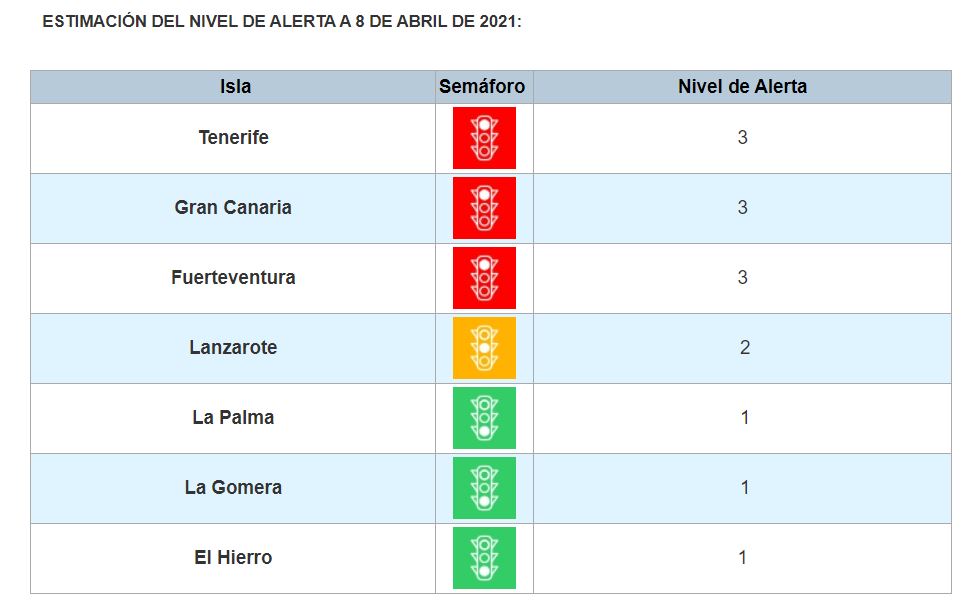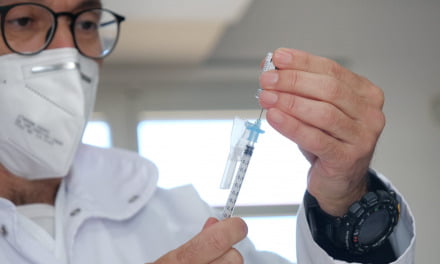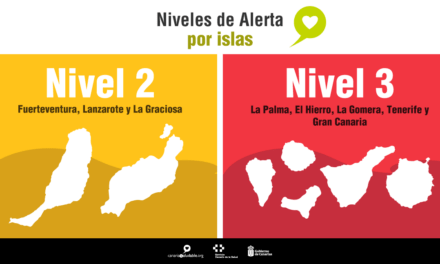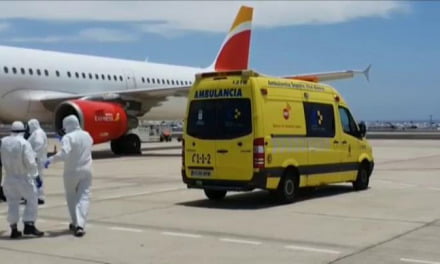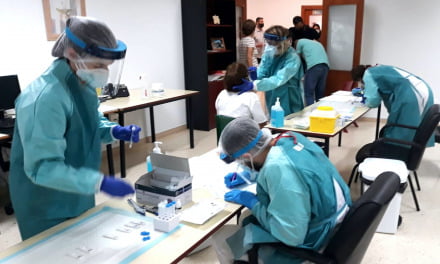Canary Islands Governing Council spokesperson, Julio Pérez, reports no changes necessary and nor will it be necessary to take any new containment measures, at least until next Thursday, when the council will again meet to look at the most current data regarding COVID-19 infection rates and steps needed to ensure the general health of the population.
Following the Governing Councils regular weekly meeting they are of the opinion that with the current data, there is no immediate need to introduce variations to the current alert levels, which means that everyone returns to the “traffic lights” system that was in place prior to the easter week enhancements.
The special rules, adopted for Holy Week, disappear and the “regular” agreed system of traffic lights is resumed.
La Palma , El Hierro and La Gomera stay at level 1; Lanzarote and La Graciosa at alert level 2, and Tenerife , Gran Canaria and Fuerteventura, at level 3.
He has also declared that the Governing Council enquired if travel during the easter week had had an impact on the epidemiological situation, but it is still too early to make that assessment.
– Julio Perez, Canary Islands’ Government Spokesperson
Pérez commented that the situation is not the same on all the islands, on Tenerife the number of cases has decreased but the figures are not as low as they need to be, and on Gran Canaria “it seems” that the numbers are stabilising.
He explained that in the case of Gran Canaria, although in recent days the data has slightly decreased, looking at the accumulated rate for 7 and 14 days, the island is at a higher than average risk, so it is appropriate to wait a little to see if stabilisation leads to a decrease in new infections.
On Fuerteventura the situation is improving but still not enough, and on the rest of the islands the data is lower.
He recalled that at level 3 some restrictions such as inter-island movements and the curfew are maintained.
He also drew attention to the fact that almost a million PCR tests have now been carried out, and in terms of vaccination he has stated that the important thing is that it is possible to maintain the Government’s target goal of reaching the middle of summer with 70% of the population already vaccinated.
This will occur if there are no interruptions in the supply and he also stressed that optimal use should be made of the vaccines, of which 14,000 more were supplied this Wednesday.
The director of the Canary Islands Health Service (SCS), Conrado Domínguez, had already announced this morning, during a radio interview on Cadena SER that at the moment there should be no changes necessary in the restrictions though “infections continue to worry”, and this has been confirmed at the Governing Council of the Canary Islands today in which the epidemiological evolution of the pandemic and the alert levels of each island were evaluated.
“The quantitative and qualitative data” is analysed at these weekly meetings, “such as where outbreaks arise, bu the current evolution of the pandemic is quite stable in the Canary Islands” Domínguez said. An example is on Gran Canaria where the number of daily positives has not finished falling: “Incidence indicators on the island are still high and the rise in pressure on critical care beds means that it is necessary to continue taking measures, or at least , maintain them”, he specified.
#CGobCan Comparecencia del portavoz del Ejecutivo, Julio Pérez, para informar de los acuerdos adoptados en la reunión del Consejo de Gobierno de #Canarias ⬇️ [HILO] pic.twitter.com/pTeatUVJbz
— Presidencia GobCan (@PresiCan) April 8, 2021

